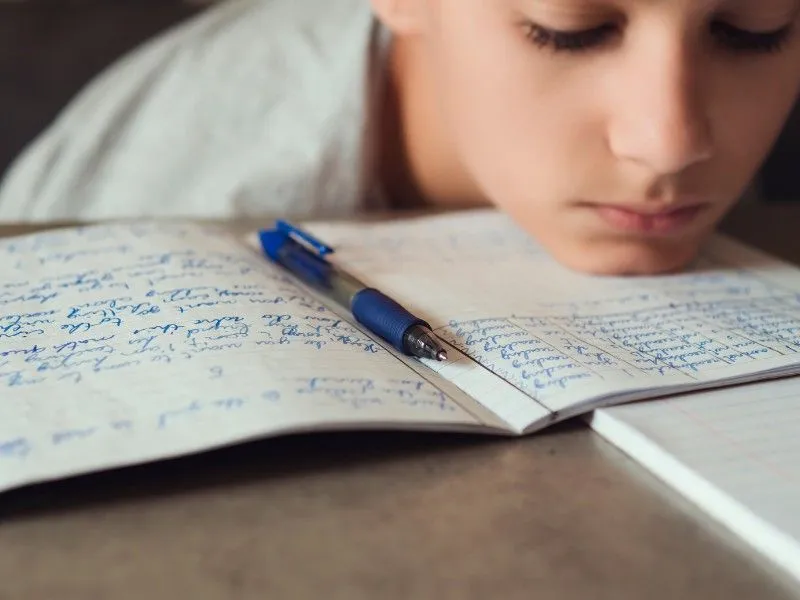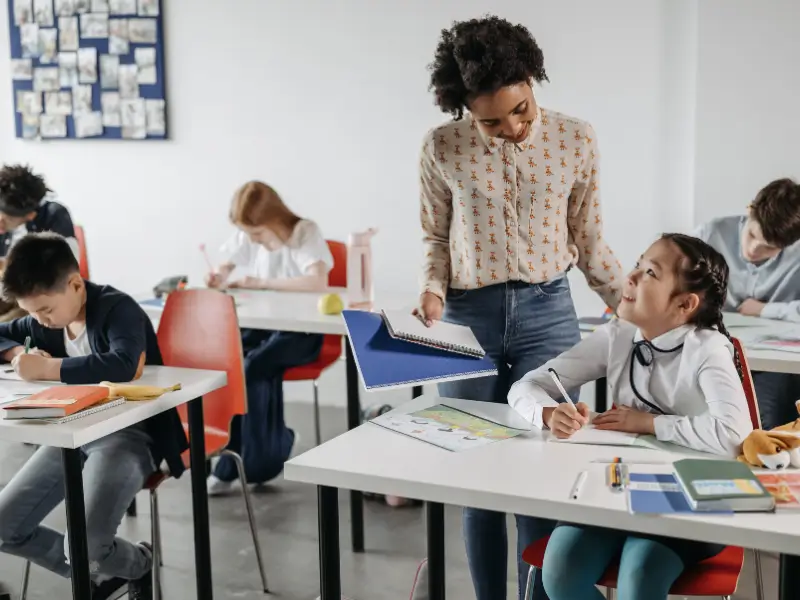Most children have some behaviour problems at some time or another. Behaviour problems arise from conditions within the child or from external influences, the effects of which are often not noticed or understood by others. Behaviour problems range from extreme withdrawal to intense hostile aggression. In a classroom, students exhibit a range of behaviours. Teachers are required to deal with all kinds of behavioural problems in a classroom. In this unit, we shall try to understand more about the difficulties experienced by students which often result in different behavior problems. It is important for teachers and parents to develop an understanding of the factors that result in problem behaviour.
Nature of Behavior Problems in Students
Behaviour problems arise from external influences whose effects are not often noticed or understood by others. Often, emotional and psychological factors in apparently normal children are not readily seen or understood but are often labelled as depression, hostility, withdrawal or daydreaming about combating the stress. They may be battered and abused sexually, emotionally or physically. Most of these children are often in regular classrooms trying to cope with their problems (themselves) without being understood.
It is important for teachers to understand the factors that could be responsible for the observable behaviour problems of their students. A lack of understanding of the reasons behind the behaviour of the students may make the teacher react in a way that might aggravate the situation. Students with problem behaviour in the classroom pose challenges for teachers . Behaviour problems may range from extreme withdrawal to intense hostile aggression. These students, if not identified and helped during their school days, would continue to have difficulties dealing with society, and their problems may become progressively more serious later in life.
Students have many physical, psychological, and educational needs that are basic to their growth and
development. Some of these needs are listed below.
Physical Needs
- Proper food, clothing
- Protection from pain, sickness
- Time for play
Psychological Needs
- To be accepted as a unique individual
- Emotional satisfaction
- Constant reassurance
- Affection
- Help in regulating emotional responses
- Help in accepting his or her gender uniqueness
- Help in learning how to behave with other people
Educational Needs
- Education that does not arouse fear
- Help in studies
- Warm and understanding atmosphere at school
- A sense of achievement
- Education to meet life's challenges
- Encouragement for new learning
All these needs are interrelated. They interact with one another and leave their imprint on the growing child.

Abraham Maslow (1970) saw human motivation as a hierarchy of needs, with the most basic being physiological needs and the highest being self-actualization. Only after basic needs are satisfied we can work on achieving higher needs.
Behavioural Problems of Children
Some behavioural characteristics of children are extreme shyness, fearfulness, aggression, attention seeking, hyperactivity, excessive dependence, daydreaming, lying and cheating, stealing, etc.
Many of these problems of children are handled by the teachers/parents by using rewards such as adult praise, treats and trinkets. However, their understanding of social situations that lead to such behavior problems is severely limited, and they may have difficulty in comprehending how their behavior affects children or why children behave as they do.
Behavioural Problems of Adolescents
The period of adolescence is often marked by intense striving for independence and by rebellion directed at adult authority. Problems with parental pressure and school supervision, drug and alcohol misuse, truancy, theft and sexual experimentation are common at this age. Therefore, it is not surprising that adolescents with such problems are generally reported to be suspicious of adults (including the therapist), rebellious, defiant and resistant to treatment attempts. Such unwilling adolescents may blame others for their own problems and lack the motivation to change their own behaviour. Group treatment methods are often used with adolescents in order to create a less threatening and more inviting atmosphere and to attempt to enlist peers' support for behaviour change. Teenagers who are primarily fearful, withdrawn, depressed or mentally confused are often given individual therapy.
Types of Behaviour Problems in Students
Some of the commonly observed behaviour problems in children are described below :
1) Classroom Disturbance: The extent to which the child teases and torments classmates, interferes with other's work and is quickly drawn into noise-making.
2) Impatience: The extent to which the child starts work too quickly, is sloppy in work, is unwilling to review work and rush through work. Physically more active and restless.
3) Disrespect-Defiance: The extent to which the child speaks disrespectfully to teachers, resists doing what is asked of, belittles the work being done, and breaks classroom rules.
4) Achievement Anxiety: The extent to which the child gets upset about tests and scores and is sensitive to criticism or correction.
5) External Reliance: The extent to which the child looks to others for direction, requires precise direction and has difficulty making one's own decisions.
6) Inattentive-Withdrawn: The extent to which the child loses attention, seems to be oblivious to what transpires in the classroom and seems difficult to reach, or is preoccupied.
7) Irrelevant-Responsiveness: The extent to which the child tells exaggerated stories, gives irrelevant answers, interrupts when the teacher is speaking and makes irrelevant comments during class discussion.
8) Need for closeness to teacher: The extent to which the child seeks out the teacher before or after class, offers to do things for the teacher, is friendly towards the teacher and likes to be physically close to the teacher.
9) Anxiety-Depression: The child seems to be tense with a face drawn and rigid, cries easily at the smallest pretext, does not talk to anyone, and doesn't take an interest in things. The child gets upset about test and test scores and is sensitive to criticism or correction.
10) Quiet and Withdrawn: The child is withdrawn and quiet in the class, doesn't have friends and is mostly isolated. He tends to be very self-centred, preoccupied with their own thoughts and problems and disinterested in or unenthusiastic about anything else.
11) Aggression and Violence: A hostile or angry behaviour directed to harm or injure a person or property.
12) Attention Deficit: The child has difficulty in attending to tasks and instructions for any length of time. Easily distracted, fidgets excessively, and has difficulty sitting still.
13) Truancy: The child who is frequently absent from school for vague reasons or minor ailments.
14) Physical Injury: Recurrent and multiple injuries are observed for which no adequate reason is given, delayed medication, spots like strap marks, bites and burns.
Causes of Behaviour Problems in Students
Personal and Social Needs
A child's need for attention, recognition, approval and belonging are just as real and compelling as the need for food and drink. A child deprived of attention might resort to any activity which gets him/her attention. A child or adolescent often does not know how to get social satisfaction properly. For example, the bully, the liar, the show off, the joker, the habitual interrupter - is probably trying to satisfy social needs.
Effects of Maturation
Another contributing factor is the individual's physical development . A short child for example, may adopt defiant, aggressive mannerism in order to demonstrate to himself/herself as well as to others that she/he is a forced to be reckoned with despite his/her shortness of stature.
The Teacher and Classroom Conditions
Teachers who are sarcastic or who humiliate their students and those who are downright unfair to them earn the animosity of the students, and they become intent on seeking means for revenge.
The teacher who hesitates may also contribute to students' misbehavior, since they try out to see what and how much they can do before the teacher demonstrates displeasure. The teacher who is easy going, who tries to be a 'pal' to the students, is another who practically extends the class an invitation to do as they jolly well please.
The teacher's methodology as well as personality can contribute to the incidence of behavior problems. If the work of the class is boring, if the interest and attention of the students cannot be held, if there is little for them to do but sit and listen or read, if the lessons are not well planned, The teacher is helping to set up the kind of environment in which discipline problems are likely to breed and flourish.
Social and Cultural Conditions
The behaviour problem of adolescents is often explained in terms of the unfavourable world conditions in which they live. Discrimination, persecution and inequality of opportunities on the basis of race, caste, religion or nationality may also contribute to problem behaviour in young people.
Home Conditions
Various kinds of unsatisfactory home conditions are also factors contributing to students' misbehaviour. Children who live in broken homes due to the death of a parent, divorce, or separation or by the prolonged absence of one or both parents for business or social reasons probably lack the firm but loving parental guidance they need for satisfactory adjustment in school life. Feeling rejected, they might attempt to compensate by resorting to different forms of unacceptable behaviour.
So it’s important to address the behaviour problems in early childhood to choose the right intervention for the future growth.
Solh Understands. We offer a variety of features to help you with behavior problem in children:
Journaling for Self-Reflection: Sometimes,not being able to care for your kid is overwhelming. Solh's journaling feature allows you to explore your thoughts and feelings in a safe space. By reflecting on your experiences and desires, you can gain clarity on how to protect your kid in behavior problems.
Anonymous Support Groups: You are not alone. Solh's anonymous support groups connect you with others who understand the struggle derives from behavior problems in kids. Share your experiences, find comfort in solidarity, and discover new perspectives on overcoming the hurdle to indulge in self care.
Solh Buddy: Feeling lost or disconnected? Your Solh Buddy, a personalized virtual companion, is here to provide encouragement and support along the way. It can offer prompts, celebrate your victories, and remind you of your strengths as you navigate the journey towards self care.
Talk now: Sometimes managing behavior problems in your kid can make you feel overwhelmed. Solh's talk now feature gives you access to dedicated counselors to help you navigate such situations.
Solh believes in a unique approach introducing Behavior problems in kids. We empower you to take charge of your well-being by offering a variety of tools. Explore Solh Wellness App today and discover the power of self-reflection, connection, and support in overcoming any problem of the mind. You are not alone on this path.



